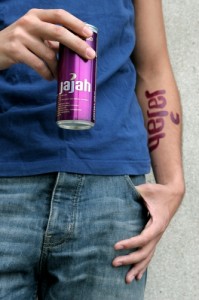No matter where they were from, it’s a pretty good bet our grandparents were very careful about what personal details they revealed to anyone. What happened within household walls (not to mention bedroom walls) was sacred, not for anyone else’s ears.
And while our parents may have been slightly less strict about this, the general rule was probably the same: personal information was kept private. Intimate details about our families, our bodies, our relationships, our homes and finances were not for sharing. Television, unauthorized biographies and gossip magazines were starting to change our perception of what should be private, but most people still showed care over what could be aired in public.
In the world in which we are raising our kids, it seems as if everything has changed. The rise of Web 2.0, where everyone has a blog, Facebook account and YouTube channel, means we have come to mine the minutiae of our lives for the interest of others. Everything that happens to us is potential Content, anecdotes that might interest our potential public. As one of my university students observed in class last year, we are always performing to an invisible camera.
It’s a lot of pressure to come up with that much content, particularly when you need to continuously groom and fine tune your digital persona. Suddenly, the argument you had with your friend on the way to school or the strange behavior of that kid in History class can seem like entertaining material. It’s hard to blame our kids for thinking that everything that happens to them is potential fodder for self-publicity when they are surrounded by examples of this all over the Internet, in magazines and on TV.
But if the very notion of privacy has changed, we as parents have to be particularly vigilant in helping our kids maintain some boundaries (and observing them ourselves).
Some material should never be online because it poses potential threats to our safety. That includes identifying information such as your address, home telephone number, daily whereabouts (using Foursquare or Facebook Places). Some of this information may be encoded in the pictures you post from your Smartphone, so educate yourself here about metadata. Aside from the concern of online predators and stalkers, personal information made public makes us vulnerable to personal identity theft, an experience that can take years of frustration to remedy and damage your reputation and credit rating.
Other material should never be put online because it can prove embarrassing and potentially hurtful to you later on. Pictures that show people drunk, unconscious, high, engaged in illegal or immoral activities or doing stuff that most people would find stupid (car surfing, vandalism, etc.) will only haunt you later on when it comes time to apply to college, find a job, start a business, find a spouse or run for public office.
Parents should remember this when posting pictures of their kids on the potty or doing cute but embarrassing little kid stuff. Those toddlers are going to grow up and resent having those pictures committed to the Internet.
Finally, your kids should never, ever post anything online that could be embarrassing or potentially hurtful to others. We take the power of the Internet for granted but it is an awesome responsibility. Teens don’t always realize that irony does not translate well in text; you can’t mitigate the words with the tone of voice that might have made it clear you were “just joking” when you called someone a particular name, referred to their appearance, sexuality, weight, accomplishments, etc. Cyberbullying is a serious issue, and even “good” kids can make poor judgment calls when it comes to posting potentially hurtful material about others.
Contrary to the schoolyard chant, words can really hurt. This past week’s suicide of a high school boy in Ottawa is just one more tragic name added to a list of kids tormented by bullying online and off.
Because privacy is not only about maintaining our own dignity; it is also about respecting the dignity of others.
Kids can overlook this, through lack of sophistication, experience and tech savvy. It is our duty as parents and educators to make sure they never forget it. That means:
- frequently talking about these issues and responsibilities;
- making regular reviews of their email and Facebook pages a condition of access to these tools, until they have proven consistent responsible behavior;
- establishing a clear, consistent and appropriate set of consequences for breaches, such as temporarily “grounding” their access to these accounts.




